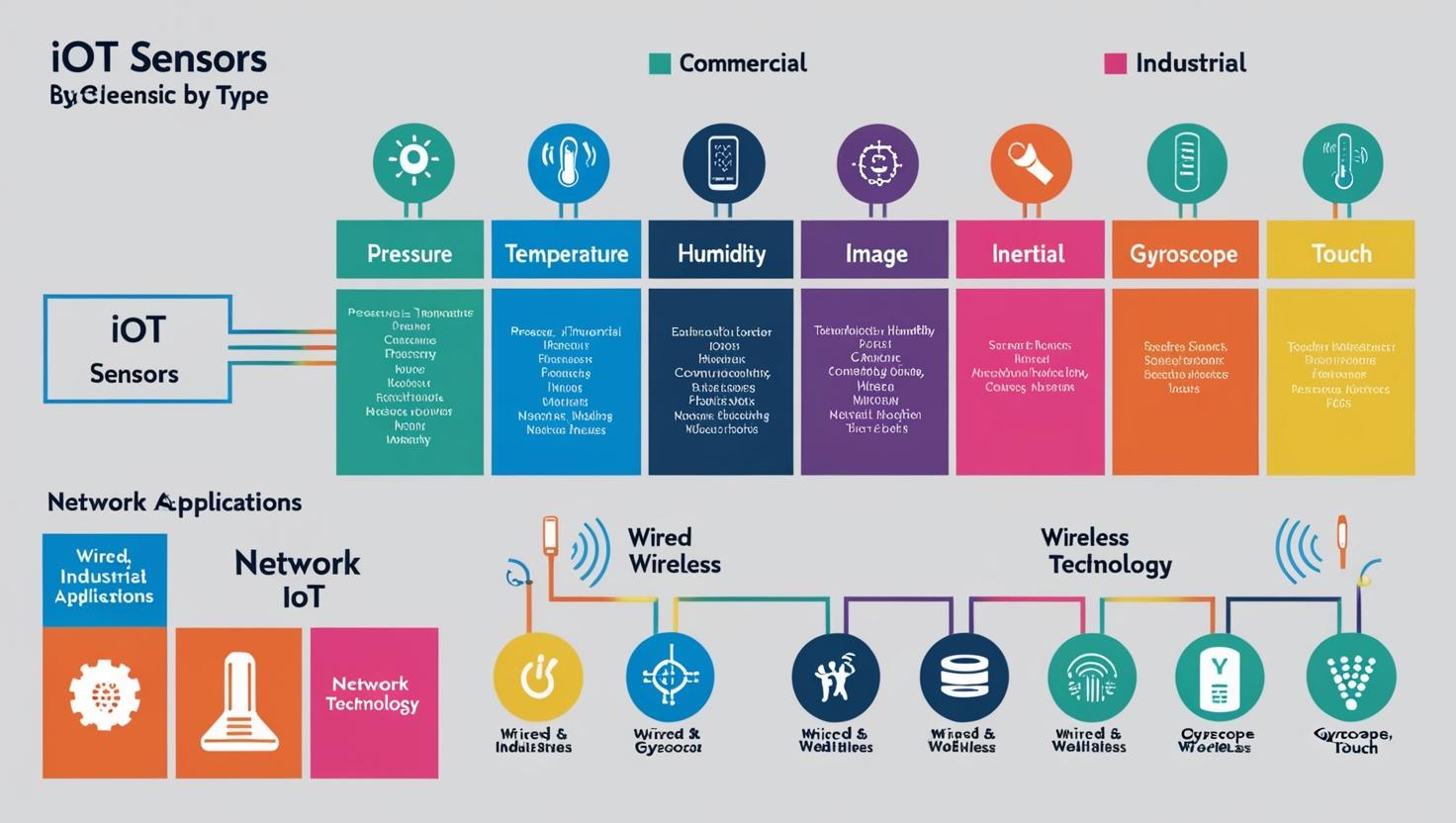The Internet of Things (IoT) is no longer just a buzzword—it’s the backbone of the connected world. From smart homes and factories to autonomous vehicles and digital healthcare, IoT sensors are the silent enablers that collect, transmit, and interpret data to power intelligent systems. As industries race to digitize operations and gain real-time insights, the IoT sensors market is witnessing unprecedented growth.
According to recent forecasts, the global IoT sensors market is set to grow exponentially, driven by advances in connectivity, data processing, and edge computing. But what’s truly shaping the future of this industry? Here are the top trends defining the next chapter of IoT sensor evolution.
1. Explosion of Smart Devices Across Every Sector
The rapid proliferation of smart devices—wearables, smart meters, connected appliances, and industrial equipment—is creating massive demand for highly sensitive, energy-efficient sensors. Every “smart” function, from motion detection to environmental monitoring, relies on sensors to gather actionable data.
As more devices get connected, manufacturers are integrating multiple sensor types (temperature, pressure, humidity, motion, and more) into compact, low-power modules to meet performance and energy efficiency requirements.
2. Edge Computing Reduces Latency and Powers Real-Time Analytics
Traditionally, IoT sensors would collect data and send it to centralized cloud servers for processing. However, the rise of edge computing is changing that dynamic. Now, sensor data is being processed closer to the source—on-site or on-device—reducing latency and bandwidth usage.
This is particularly crucial in industries like manufacturing, autonomous vehicles, and healthcare, where real-time decision-making is critical. Edge-capable sensors and embedded AI are making IoT systems faster, more reliable, and more autonomous.
Download PDF Brochure @ https://www.marketsandmarkets.com/pdfdownloadNew.asp?id=26520972

3. 5G and LPWAN Unlock New Possibilities for Connectivity
The rollout of 5G networks and low-power wide-area networks (LPWAN) is revolutionizing how sensors communicate. 5G brings ultra-fast, low-latency connections for data-heavy and time-sensitive applications, while LPWAN technologies like NB-IoT and LoRaWAN are ideal for long-range, low-power applications such as agriculture, smart cities, and logistics.
These advancements are enabling billions of sensors to come online in areas that were previously out of reach due to power or bandwidth constraints.
4. Energy Harvesting and Battery-Free Sensors Gain Traction
Power supply has always been a limiting factor for deploying sensors in remote or hard-to-reach locations. The emergence of energy-harvesting technologies—which convert ambient sources like light, heat, or vibration into electrical energy—is paving the way for battery-free sensors.
This innovation reduces maintenance costs, enhances scalability, and enables IoT deployments in critical infrastructure, pipelines, forests, and offshore platforms where regular battery replacement is impractical.
5. AI-Powered Sensors Make Devices Smarter
Artificial Intelligence (AI) is increasingly being embedded into sensors themselves, allowing for local data analysis, anomaly detection, and predictive maintenance without needing constant cloud connectivity. These AI-on-sensor technologies are transforming how we use IoT—from simple data collection to intelligent action.
This trend is accelerating in sectors like healthcare, where wearable sensors can detect early signs of cardiac irregularities, or in industrial automation, where equipment health is monitored in real-time to prevent breakdowns.
6. Rising Importance of Cybersecurity and Data Integrity
As the number of connected devices grows, so does the risk of cyberattacks. IoT sensors—especially those used in critical infrastructure, smart grids, and healthcare—are potential entry points for malicious actors.
To mitigate these risks, sensor manufacturers are embedding hardware-level security, encryption, and secure communication protocols. Blockchain is also being explored as a way to ensure data integrity in decentralized sensor networks.
7. Sustainability and Circular Economy Initiatives
With environmental concerns at the forefront, the sensor industry is embracing sustainable design, including recyclable materials, modular components, and energy-efficient manufacturing processes.
IoT sensors are also supporting sustainability goals across industries by enabling smart energy usage, waste reduction, water conservation, and carbon monitoring.
8. Industrial IoT (IIoT) Leads the Charge
Industrial sectors—particularly oil & gas, mining, agriculture, and manufacturing—are among the largest adopters of IoT sensors. Applications range from predictive maintenance and asset tracking to environmental monitoring and worker safety.
The focus is shifting toward robust, ruggedized sensors that can operate in extreme conditions and integrate seamlessly with legacy systems.
Conclusion: A Sensor-Driven Future
The global IoT sensors market is undergoing a paradigm shift—from basic data collection to intelligent, autonomous systems. As technology continues to advance, sensors will become even more compact, cost-effective, and intelligent, enabling a new era of hyper-connectivity across every sector of the economy.
From smart cities and factories to remote villages and outer space, IoT sensors are reshaping how we understand and interact with the world. For businesses, investors, and innovators, the opportunity lies in harnessing these trends to build solutions that are not just connected—but truly smart.
